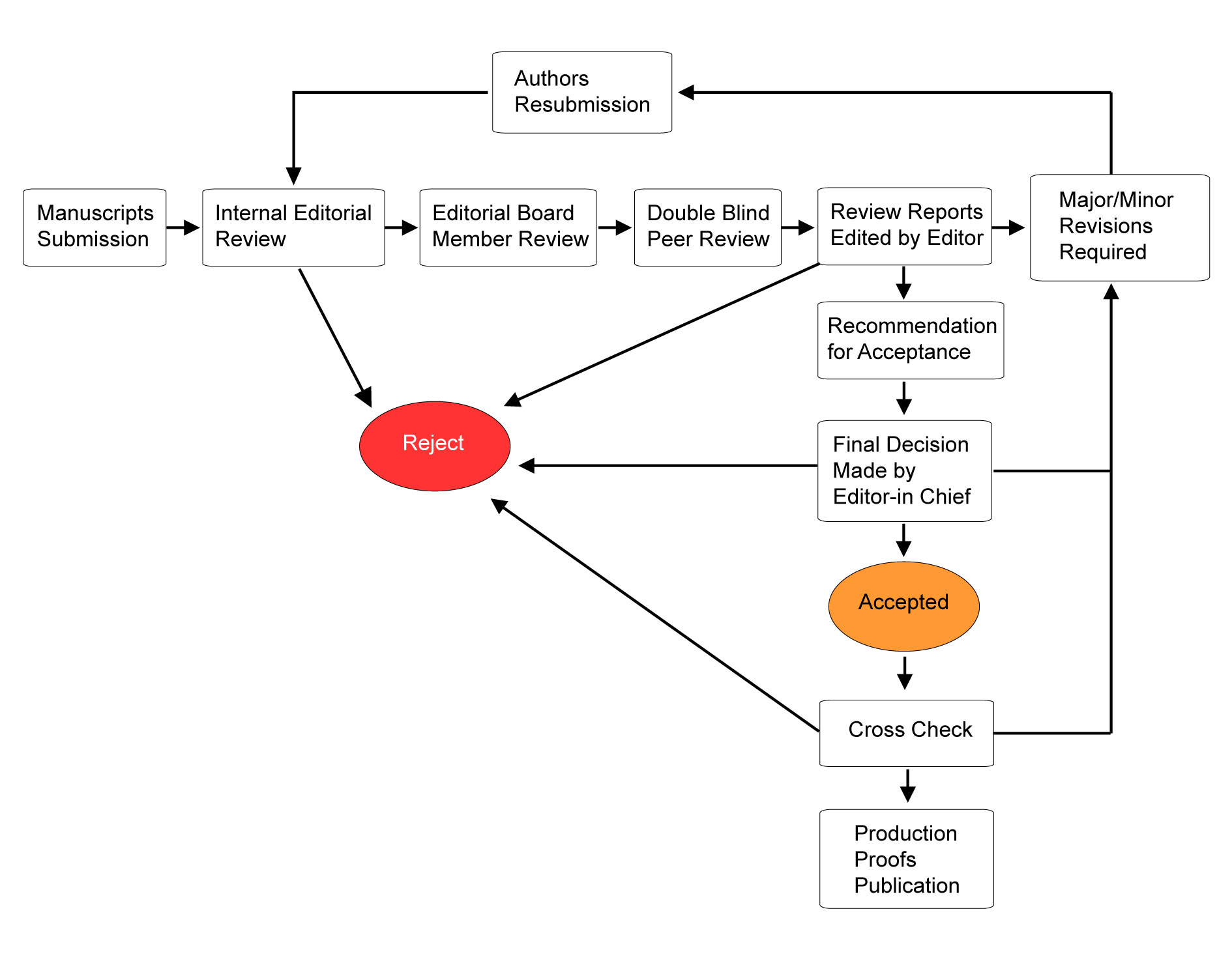Editorial Workflow
Annals of Urologic Oncology (AUO) follows a single-blind peer review process. Each Editorial Board Members is responsible for organizing and conducting a thorough peer review of submissions, assessing both the scope and quality of submissions.
1. Review in advance
Once a manuscript is submitted for publication, the editorial department carefully and thoroughly reviews the manuscript to determine its suitability for peer review.
2. Executive Editor or Editor-in-Chief review
After the preliminary review, the manuscript is sent to the journal's executive editor for further evaluation.
A. If the Executive Editor determines that the manuscript is of insufficient quality to pass the standard review process, or if its subject matter falls out of the scope of the Journal, the Executive Editor reserves the right to reject it without further processing.
B. If the Executive Editor considers the submitted manuscript to be of sufficient quality and within the scope of the journal, the manuscript will be assigned to an Editorial Board Member with expertise in the subject matter.
Note: If the manuscript is authored by the Executive Editor, it will be processed and reviewed by the Editors-in-Chief and vice versa.
3. Peer review
AUO typically follows a single-blind peer review process.
External reviewers may or may not be from a list of potential reviewers recommended by the author. The assigned Editorial Board Member will select at least two reviewers for a particular manuscript, ensuring they have the expertise and experience in the subject matter.
The review report provides feedback to the Editors on the quality of the manuscript, and offers constructive suggestions to authors for improvement. Confidential comments, made by reviewers to the editors, will not be shared with the author. Constructive comments that may help improve the quality of the manuscript will be forwarded to the author. In their evaluation report, the reviewer should address the following points:
A. Is the text comprehensive enough for people to understand? If not, how can it be improved?
B. Does the manuscript provide sufficient evidence to support its claims?
C. Have the authors properly acknowledged and referenced previous findings?
D. Are the methods described in sufficient detail to allow reproducibility?
E. Does the manuscript include detailed protocols as supplementary information? If not, should it?
Reviewers are expected to submit their reports in a timely manner (within two weeks), as a timely review contribute to efficient publication of the manuscript, benefiting both the authors and the scientific community.
Reviewers should submit their reports on the manuscript to the designated Editorial Board Member along with their recommendations, choosing one of the following actions:
1) Accept Submission
2) Major/Minor Revisions Required
3) Decline Submission
4. Editorial decision
If the comments contain confidential information, the review report is edited by the Executive Editor. Reviewers should include these comments in the confidential section of the review form, which is for editors only. If the quality of the reviewer's report does not meet the requirements, the Executive Editor reserves the right to request the Editorial Board Member to add reviewers.
5. Once all reviewers have submitted their reports, the Executive Editor may make one of the following editorial recommendations to the Editor-in-Chief:
1) Accept Submission
2) Major/Minor Revisions Required
3) Decline Submission
If the Executive Editor recommends "Accept Submission", the Editor-in-Chief is notified to check the manuscript and review report. The Editor-in-Chief may overrule the Executive Editor's recommendation (in which case the manuscript is rejected) or approve the Executive Editor's recommendation (in which case the manuscript is accepted for publication).
If the Executive Editor suggests that "Major/Minor Revision Required" the suggestion is communicated to the author. The author should revise the manuscript according to the reviewer's suggestion and submit the revised manuscript in time. Once a revised manuscript has been submitted, the original reviewer is contacted to request a review of the revised manuscript. When submitting the review report, the reviewer will also put forward suggestions of "Accept Submission", "Revisions Required" or "Decline Submission". The Executive Editor can then make an editing recommendation, which can be either "Accept Submission" or "Revisions Required" or "Decline Submission". If the Executive Editor recommends rejection, it will be done immediately. In addition, if two reviewers recommend rejection of the manuscript, it is immediately rejected.
The editorial workflow gives the Executive Editor the power to reject any manuscript because of its inappropriate subject matter, lack of quality, or incorrect results; It also gives the Executive Editor similar authority over manuscripts assigned to them by the Editor-in-Chief. However, only the Editor-in-Chief can approve manuscripts for publication, and the Executive Editor recommends manuscripts to the Editor-in-Chief for acceptance. Proposals for employment must be approved by the Editor-in-Chief before publication. The Executive Editor cannot designate himself as a reviewer for the manuscript. This is to ensure that every manuscript submitted to AUO has a high quality, fair and impartial peer review process, as any manuscript must be recommended by one or more (usually two or more) external reviewers, an Executive Editor and the Editor-in-Chief before being accepted for publication.
 Editorial Workflow
Editorial Workflow
AUO respects the request that manuscripts not be peer-reviewed by experts who may have competing interests with the authors of the submitted manuscripts. Editors can not keep track of all the competing interests; Therefore, if reviewers identify any potential competing interests during the review process, we expect them to notify the Editor-in-Chief or Executive Editor. In addition, if a reviewer has a conflict of interest in reviewing a manuscript submitted by any author/contributor to the manuscript, the reviewer should notify the Editors or editorial department of the journal.
Special Issues are collections of papers on topics of particular interest, organized and led by Guest Editors who are experts in the field. All submissions for Special Issues follow the same peer review process as regular articles. All manuscripts should be submitted through the journal's online submission system, and Guest Editors and invited authors must adhere strictly to the Journal’s Editorial Policies.

 Submit Manuscript
Submit Manuscript